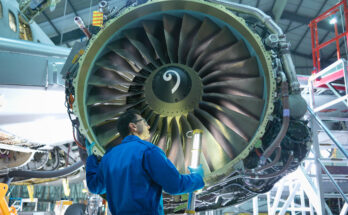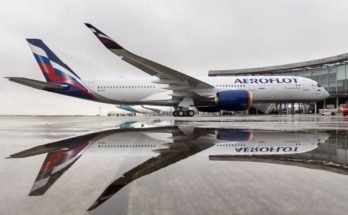 Airbus is taking an interest in ZeroAvia’s hydrogen-electric engine program. Aside from participating in a new round of funding to continue to develop the new engine technology, Airbus will cooperate with ZeroAvia on testing fuel cell technology and hydrogen refueling methods.
Airbus is taking an interest in ZeroAvia’s hydrogen-electric engine program. Aside from participating in a new round of funding to continue to develop the new engine technology, Airbus will cooperate with ZeroAvia on testing fuel cell technology and hydrogen refueling methods.
ZeroAvia believes Airbus’ involvement will help accelerate the timeline for developing the company’s first engine, a 600-kW-power-class engine designated the ZA600. A second engine in development, the ZA2000, will offer power in the 2.0-5.4-megawatt range. Both engines use onboard fuel cells containing hydrogen to generate electricity that powers electric motors. ZeroAvia says that its hydrogen system has more than 15 times the energy density of a battery-powered system and is two to three times more fuel efficient than a comparable combustion engine.
The ZA600 is designed to power fixed-wing aircraft in the nine- to 19-seat range. ZeroAvia has been testing the system on a converted twin-engine Do 228 turboprop, and the company hopes to certificate the engine in 2025. The company will initially focus on the conversion/upgrade market for specialized applications like short-range airline travel and tourism. Despite the engine’s high efficiency, the fuel cell system will be relatively short ranged compared to conventional turboprops.
ZeroAvia sees the more powerful ZA2000 as a replacement powerplant for larger regional turboprops like the De Havilland Dash 8-400. Alaska Airlines has dedicated one of its Dash 8s as a testbed for conversion. It, like Airbus, is contributing to the new funding round managed by Saudi Arabia’s Neom Investment Fund and Barclays Sustainable Impact Capital.
A lifelong aviation enthusiast, Douglas Royce is currently co-editor of four of Forecast International's Market Intelligence Services: Civil Aircraft Forecast, Military Aircraft Forecast, Rotorcraft Forecast, and Aviation Gas Turbine Forecast. As such, he plays a key role in many important projects that involve market sizing and forecasting for various segments of the world aerospace industry, as well as demand for related systems.




